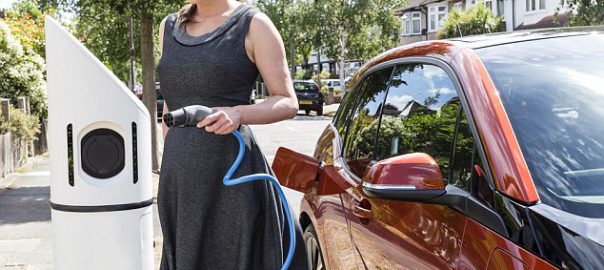- On-street Residential Chargepoint Scheme available since January 1
- EV owners must ask their local authorities to apply for chargers on their behalf
- Scheme will favour areas where no off-street parking is available
- Councils can apply for multiple plug-ins to cover current and future EV demand

The biggest issue strangling the nation’s switch from petrol and diesel cars to electric vehicles is undoubtedly the lack of infrastructure in the UK. Too few chargers to replenish batteries – especially in inner-city areas where short journeys are best served by zero-emissions electric cars but most people must park their car on the street – have restricted the take-up of pure electric models in Britain.
However, a new £2.5 million ‘On-street Residential Chargepoint Scheme’ has been created to allow EV owners to apply to have a plug-in point installed on their street – and perhaps even right outside their house – the only problem is you have to apply through your council.
The scheme offered by the Office for Low Emission Vehicles from January has made £1 million available to fund installations during the current financial year and an additional £1.5 million to cover applications made during 2017/18. Residents who want one of the twin charge points added on their street will have to ask their local authority to take up their case, with funding then allocated on a first-come first-served basis.
Of course, if you (or your local authority) is fortunate enough to secure one of the charge posts, there’s no guarantee it’ll be available for you to take advantage of – any electric-car or plug-in hybrid driver will be able to use it and you’ll have to pay to have access to the supply. So don’t expect to plug your BMW i3 or Nissan Leaf into one overnight every day.
The scheme is aimed at EV owners who have no off-street parking, for example those with on-street resident parking bays – suggesting most accepted applications will be in highly-populated urban areas. However, local authorities can also apply to the scheme to meet future demands, meaning plug-in posts capable of charging two vehicles at once could be erected in your area even if there are currently no electric car owners living on your street.
Poppy Welch, head of Go Ultra Low – a joint government and industry campaign to encourage motorists into zero-emissions vehicles – said:
‘The growing demand for electric vehicles justifies greater on-street charging infrastructure and for EV owners that do not have access to off street charging, this public infrastructure is vital.
‘2016 marked a record year for plug-in registrations with more motorists than ever making the switch to electric. Annual uptake rose 29 per cent and we expect this strong growth to continue, so welcome all investments made in the national charging infrastructure.
‘While Go Ultra Low research shows more than 90 per cent of charging is done at home, there are already more than 11,000 publically accessible charge points around the country, so this growing national network provides a useful additional option to motorists.’
Read more: This is Money
